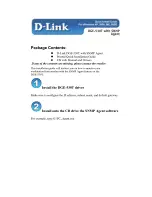
192 Routing traffic
In the following example, the routing policy for a 400 MP Router is changed from exchange-based to
port-based:
Assigning a static route
A static route can be assigned only when the active routing policy is port-based and running on a 4/16
SAN Switch and 4/8 SAN Switch, SAN Switch 2/8V, SAN Switch 2/16V, SAN Switch 2/32, SAN Switch
4/32, SAN Director 2/128, and 4/256 SAN Director (using configuration option 1). When
exchange-based routing is active, you cannot assign static routes. Even if the active routing policy is
port-based, you cannot assign static routing to the 4/64 SAN Switch, 400 MP Router, or 4/256 SAN
Director (using configuration option 5).
To assign a static route, use the
uRouteConfig
command. To remove a static route, use the
uRouteRemove
command.
NOTE:
SAN Switch 2/32, SAN Director 2/128, and 4/256 SAN Director (using configuration option 1):
When you enter the
uRouteConfig
command, two similar warning messages might display if a platform
conflict occurs. The first message displays when the static routing feature detects the conflict. The second
message displays when the Dynamic Load Sharing feature detects the condition as it tries to rebalance the
route.
A platform conflict occurs if a static route was configured with a destination port that is currently down. The
static route is ignored in this case, in favor of a normal dynamic route. When the configured destination
port comes back up, the system attempts to reestablish the static route, potentially causing a conflict.
Specifying frame order delivery
The order of delivery of frames is maintained within a switch and determined by the routing policy in effect.
Following are the frame delivery behaviors for each routing policy.
•
Port-based routing
All frames received on an ingress port destined for a destination domain are guaranteed to exit the
switch in the same order in which they were received.
•
Exchange-based routing
All frames received on an ingress port for a given exchange are guaranteed to exit the switch in the
same order in which they were received. Because different paths are chosen for different exchanges,
this policy does not maintain the order of frames across exchanges.
If even one switch in the fabric delivers out-of-order exchanges, then exchanges are delivered to the target
out-of-order, regardless of the policy configured on other switches in the fabric.
NOTE:
Certain devices do not tolerate out-of-order exchanges; in such cases, use the port-based routing
policy.
switch:admin>
aptpolicy
Current Policy: 3
3: Default Policy
1: Port Based Routing Policy
3: Exchange Based Routing Policy
switch:admin>
switchdisable
switch:admin>
aptpolicy 1
Policy updated successfully.
switch:admin>
switchenable
switch:admin>
aptpolicy
Current Policy: 1
Summary of Contents for AE370A - Brocade 4Gb SAN Switch 4/12
Page 18: ...18 ...
Page 82: ...82 Managing user accounts ...
Page 102: ...102 Configuring standard security features ...
Page 126: ...126 Maintaining configurations ...
Page 198: ...198 Routing traffic ...
Page 238: ...238 Using the FC FC routing service ...
Page 260: ...260 Administering FICON fabrics ...
Page 280: ...280 Working with diagnostic features ...
Page 332: ...332 Administering Extended Fabrics ...
Page 414: ...398 Configuring the PID format ...
Page 420: ...404 Configuring interoperability mode ...
Page 426: ...410 Understanding legacy password behaviour ...
Page 442: ...426 ...
Page 444: ......
Page 447: ......
















































